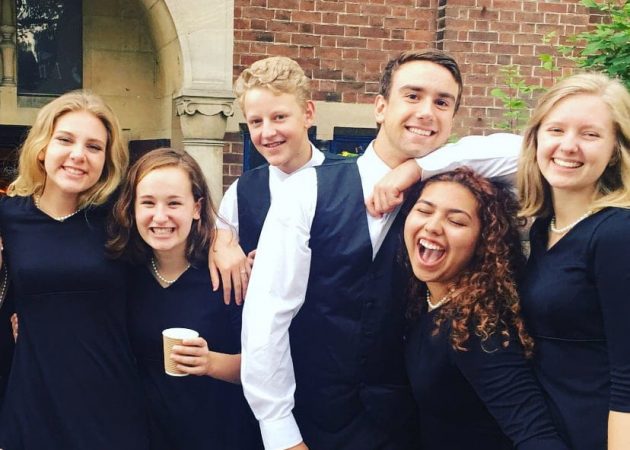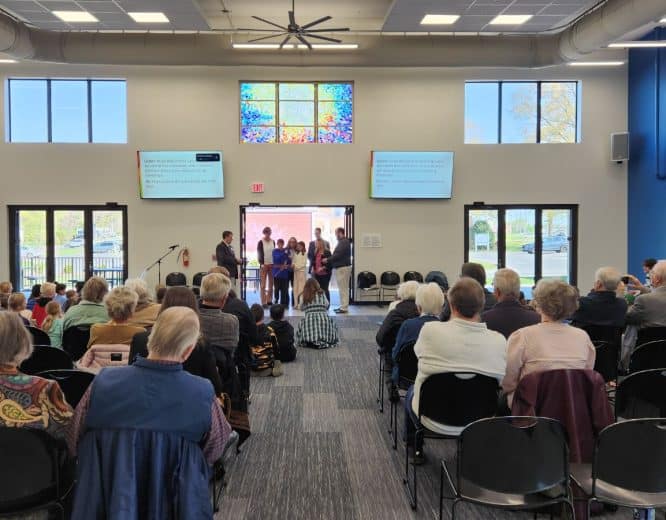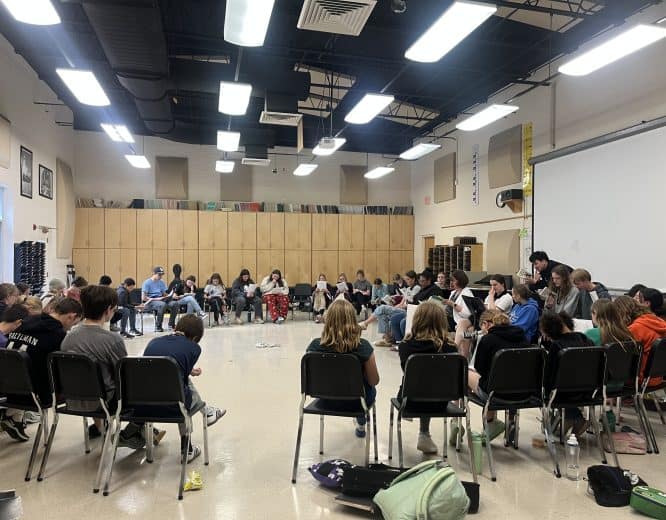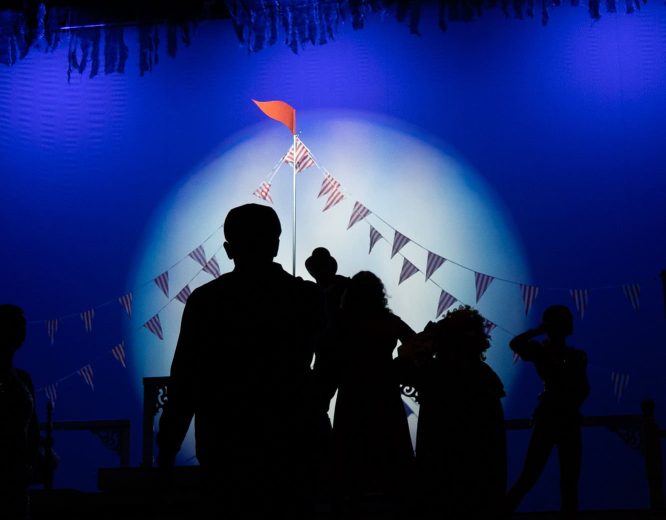Benefits of Fine Arts Education

Zach Bauman ‘19, wrote the following perspective as part of an assignment for a personal finance class. Zach was a member of Touring and Chamber choir, and played varsity soccer, baseball and basketball.
Fine Arts is a broad phrase used to describe music, painting, theatre, dance, poetry, film, and photography just to name a few of the many aspects to Fine Arts. Tina Beveridge in her article “No Child Left Behind and Fine Arts Classes” she says, “I have yet to see a basketball team win a game by exclusively using lay-ups to score points. In the same way, if we focus exclusively on reading and math—however important these subjects may be—we will never meet the goals of educating children to be successful in anything but the most menial tasks and jobs.” Fine Arts, while they provide performances and visual works to observe, there is something to be said about how the Fine Arts affects social and academic development among students.
Choir helps kids learn skills that can be applied to school. By singing or playing a musical instrument helps teach students the discipline of sight reading. Sight reading is the act of singing or performing a piece of music that someone has just seen. To learn the piece of music one has to sight read and repeat over and over and over again until they have learned all the right notes. This teaches one to be disciplined in perseverance. Just like writing a research paper, learning music takes hours of work. In this way music helps to develop good habits that one can use in school. Choraliers and musicians also learn the skill of memorization. Most directors have their students memorize the music so they can watch the director for changes in tempo and dynamics. Memorization is often helpful for memorizing formulas or information for tests. Music leads kids to have more spatial intelligence. This helps in visualizing where puzzle pieces go in a puzzle but also helps to understand math problems more completely. There is a connection between spatial intelligence and math because of how our brains are wired.
Being exposed to the arts helps the brain develop more fully. Drawing generates the utilization of the occipital lobe. Singing and playing an instrument requires the use of the right-hand side of the brain for keeping rhythm and playing or singing the notes.Since school mainly uses the left half of our brains, and school takes up more hours of kids’ childhood years than anything but sleeping, it is good to participate in music to get the right half of the brain working.
Choir helps to develop and process language at a young age. The more experience people have with music, the stronger capacity people have to speak clearly. Consonants are always preached in choir because when singing the vowels stick out, so it’s important to enunciate consonants clearly. Because of the practice that choir gives people with enunciation, choraliers tend to speak more clearly. In most choirs’ repertoire there are normally some foreign language pieces that the choir will sing. This helps to broaden the language a student’s knowledge of the world and add unfamiliar languages to a students’ brain that they could encounter later in life.
With this said, I think our school does a magnificent job of developing social and academic success with our Fine Arts program. Jared Stutzman, our choral director, makes sure to include at least two pieces of music in a foreign language for junior choir and this year in Touring Choir has five5 foreign language pieces and Chambers has two2. Mr. Stutzman also makes all the choirs have their music memorized. and for Touring Choir, that means memorizing 18-20 songs in two to three months. The same is true for musicals and plays. The directors have the actors memorize all their lines, songs, and dances for the performances. Because of all this memorization that choirs and actors do, memory for bible and spanish class become easier.
Ms. Gasho, the art teacher and Mr. Gosho, the photography teacher do a wonderful job at incorporating creative thinking. Ms. Gasho has her drawing classes go outside and collect inspiration for drawings and stain glass. Because Ms. Gasho incorporates nature into some of her classes it gives students an opportunity to find different inspiration than just what is around the classroom. In Mr. Gasho’s digital photography class, he had his students use flashlights and a camera to spell words. They were able to take pictures of a flashlight moving because students were able to set the camera’s exposure time for a longer period of time allowing the camera to capture the flashlight’s every motion. Another example of a creative project in digital photography was a project where the students had to use things around school to spell out words. So a good example is the railing at the bottom of the steps leading to the counseling suit, creates a P. This requires having a creative eye to see letters in objects around school. These reasons and many more that I don’t have room to mention are why our school demonstrates social and academic development for students through the Fine Arts.



